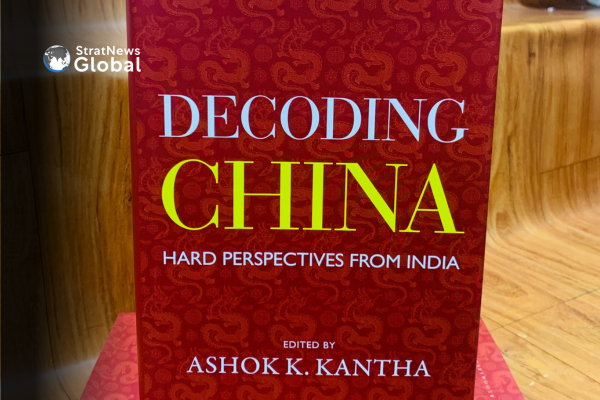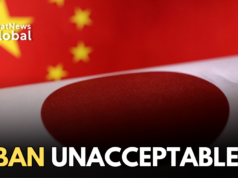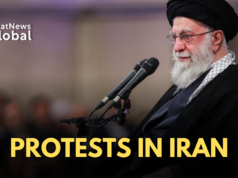India must forge its own lens to understand China. This was the central message as experts, diplomats and military leaders came together for the launch of Decoding China: Hard Perspectives from India in New Delhi on Thursday.
From questions of trust in the India–China dialogue to concerns over military modernisation, economic dependence and neighbourhood sensitivities, the book and its contributors argued that India cannot rely on Western analyses but must build perspectives rooted in its own strategic realities.
Moderating the session, Dr Arvind Gupta former Deputy National Security Adviser and the Director of the Vivekananda International Foundation (VIF), which organised the event, said that while recent years have shown some signs of movement in the India–China dialogue, observers remain uncertain whether this reflects “short-term tactical manoeuvres or a deeper strategic shift.” He asked whether China could be trusted, whether it truly trusts India, and how New Delhi should respond to this ambiguity.
The book, divided into four sections, is designed to capture what Indians think of China, offering a distinctly Indian perspective on Beijing’s policies and ambitions.
Ashok Kantha, former Indian ambassador to China and the editor of the book, argued that Western scholarship has often misunderstood China by echoing Beijing’s own narratives and assuming its inevitable rise. He stressed that India must develop its own analytical lens, since its strategic concerns with China are very different from those of the West.
According to him, Western studies frequently repeat ideas such as China being the “Middle Kingdom,” its rise as merely a return to past glory, or its certain overtaking of the United States assumptions he described as misleading because they overlook present realities. “In fact,” he pointed out, “the gap between the US and Chinese economies is widening rather than narrowing.” He added that for India, it remains uncertain whether China will become a rival or a partner, making the relationship more complex.
Kantha said the book is distinctive for bringing together seasoned practitioners and scholars in a multidisciplinary approach, with policy-oriented chapters offering practical, real-world recommendations on dealing with China.
Lt Gen Rakesh Sharma Former GOC Ladakh Corps & Adjutant General of Indian Army , reflecting on India’s military experience, pointed to the BrahMos supersonic cruise missile, admired for its speed, precision and difficulty to intercept, as one of the clear success stories during Operation Sindoor, India’s response to the Pakistani terrorist strike in Pahalgam. However, he cautioned against complacency, noting that China is advancing rapidly.
Referring to China’s Victory Day Parade on September 3 to mark the 80th anniversary of the end of the Second Sino-Japanese War and the Second World War, he said that nearly 80 per cent of the equipment displayed was new, including systems unseen even by Western observers. Among them were the PL-15 missile, with far greater range than anticipated, and hypersonic cruise missile capabilities not yet publicly displayed even by the United States. Such developments, Sharma warned, cannot be ignored, especially with Pakistan showing interest in interceptors like the HQ-29, which signals shifting regional dynamics.
He also spoke about India’s neighbourhood, expressing concern over suggestions that New Delhi should impose red lines on its neighbours. India already faces sensitive challenges in the region, he said, and must move cautiously to rebuild ties. “Neighbours are aware of India’s sensitivities about China but also expect reciprocity. In this context, ultimatums could be seen as threats,” he warned, urging that trust-building, not confrontation, should shape India’s regional approach.
Santosh Pai, a lawyer, economist and honorary fellow at the Institute of Chinese Studies (ICS), New Delhi, who contributed to the book, focused on India’s economic challenges with China. “India is not unique in having a huge dependency on China. But where India stands apart now is that there is a feeling we have lost five years because of the border incursions,” he said. Unlike other countries that have been actively working to reduce their reliance on China, India has been constrained by the lack of economic engagement, which has limited policymakers’ options.
With Chinese investments blocked, India’s trade deficit with Beijing has nearly doubled in the past five years, a trend that coincided with the COVID period. In this context, Pai noted, even the prospect of a limited thaw in ties poses difficult questions on how India can create space to reduce dependency and close the trade gap.
“China is in every drawing room, every marketplace, and every strategic conversation in West Asia,” said Anil Trigunayat, former Indian Ambassador to Jordan, Libya and Malta, underlining Beijing’s sweeping rise in the region.
In the past ten years, China has become West Asia’s biggest trading partner, with trade crossing $500 billion, sent vaccines across the region during the COVID-19 pandemic, and built a stronger role in defence, he noted. Trigunayat recalled attending the China–Middle East Forum in 2019, where he was the only delegate who was not Chinese or Arab, and leaders from the region openly asked for more Chinese involvement. That call, he explained, has since taken shape through the Belt and Road Initiative and its different versions, from the Eastern Silk Road to the Health Silk Road, reaching from Tehran to Tel Aviv.
The book also features chapters by authors such as Jayadeva Ranade, a former Cabinet Secretariat officer and President of the Centre for China Analysis and Strategy who examines Chinese politics and security. Ananth Krishnan, The Hindu’s China correspondent, brings insights from years of on-the-ground reporting. Manoj Kewalramani of the Takshashila Institution analyses Chinese domestic politics and media narratives. Madhurima Nundy, a public health researcher at the Institute of Chinese Studies (ICS), focuses on China’s health policies. Debasish Chaudhuri, also affiliated with ICS, contributes his expertise on Chinese society and governance. Group Captain Chandan Sharda of the Indian Air Force writes on China’s military modernisation and air power. Together, their contributions cover China’s ties with Pakistan and Russia as well as its broader strategic ambitions.
Research Associate at StratNewsGlobal, A keen observer of #China and Foreign Affairs. Writer, Weibo Trends, Analyst.
Twitter: @resham_sng





